The Impact Of Septoplasty On Nasal Shape And Function
At Texas Sinus and Snoring, it is quite common to find structural issues at the core of the complaints people admit to during their interviews.
We perform a CT scan and a nasal endoscopy on every patient presenting for sinus or nasal obstructive symptoms. Very often there are structural causes to the presenting symptoms.
One of the most common is septal deviation. The septum is a midline structure that divides the nose into a right and left half. It is made of two different bones and a large cartilage piece in the shape of a quadrangle. It can be deviated and obstructive in a variety of areas and materials.
The area near the tip of the nose is called the caudal area and the area further back in the nose is the posterior or cephalic region.
The CT is the absolute best way to see all the structures in their specific orientation. The endoscopy can help understand allergies, sinusitis and inflammatory contributors not seen or underrepresented by CT scans.
Once a septal deviation is characterized, a septoplasty is advised depending on the type of deviation seen.
What is Septoplasty?
Septoplasty is a surgical procedure aimed at correcting a deviated septum, a common structural issue that can obstruct nasal airflow and lead to symptoms of nasal congestion, difficulty breathing, and recurrent sinus infections.
While the primary goal of septoplasty is to improve nasal function by straightening the septum, there is often curiosity and concern regarding whether the procedure alters the shape of the nose.
Some patients have a desire to correct outward crookedness and this is not possible. It is important to state here that septoplasty is NOT a cosmetic procedure and is NOT designed to correct cosmetic deformities
Other patients like their current nasal shape and are worried about whether the septal procedure will change their current nasal shape appreciably.
In this essay, we will explore the indications for septoplasty, the various surgical approaches to septoplasty, and the subtle changes that may occur to the nose post-operatively as a result of the procedure.
Indications for Septoplasty
Septoplasty is recommended for individuals who experience symptoms related to a deviated septum, including nasal congestion, difficulty breathing, snoring, recurrent sinus infections, and facial pain or pressure.
A deviated septum can be caused by trauma, congenital anomalies, or nasal growth abnormalities, and can significantly impact the quality of life for affected individuals.
Prior to undergoing septoplasty, patients undergo a comprehensive evaluation by an otolaryngologist to determine the severity of the deviation and ensure that septoplasty is the appropriate course of treatment.
Types of Approaches to Septoplasty
We use the CT and Endoscope data to determine the best approach for the septoplasty. More caudal deviations require a full transfixion incision whereas more posterior deviations can use a hemi-transfixion or killians incision.
1. Full Transfixion Septoplasty: In this approach, an incision is made internally using a transfixion technique, where the septum is accessed through both nostrils.
This allows for complete exposure of the deviated portion of the septum, enabling the surgeon to make precise corrections to straighten the septum and improve airflow.
Full transfixion septoplasty provides excellent visualization of the nasal structures and is ideal for more complex septal deviations.
Quite often the caudal deviation causes asymmetric nostrils when seen from below. If this is the case, when it is successful, the full transfixion can help to make the nostrils more symmetric.
It is also used to counter a tension nose deformity and can result in a 1 mm regression of the nasal tip. Usually imperceptible.
2. Hemi-Transfixion Septoplasty: A hemi-transfixion septoplasty involves making an incision on one side of the septum to access and correct the deviated portion.
This approach offers a less invasive alternative to full transfixion septoplasty while still allowing for effective correction of the septal deviation.
The incision location is typically well concealed within the nasal cavity, minimizing visible scarring post-operatively. It is used when the caudal septum is not involved
3. Killian’s Incision Septoplasty: Killian’s incision is a surgical technique that involves creating an incision closer to the junction of the cartilaginous and bony septum.
This approach provides access to both the anterior and posterior portions of the deviated septum, allowing for comprehensive correction of a mostly bony deviation.
Killian’s incision septoplasty is advantageous for addressing septal deviations that are predominantly located in the posterior nasal cavity.
Subtle Changes in Nasal Shape:
While septoplasty is primarily focused on improving nasal function by straightening the septum and increasing airflow, subtle changes in nasal shape may occur as a result of the procedure.
These changes are typically minimal and primarily related to alterations in the internal nasal structures rather than external cosmetic appearance.
Some of the subtle changes that may occur with different septoplasty techniques include:
1. Improved Nasal Symmetry: Straightening the septum can contribute to improved nasal symmetry, particularly in cases where the deviation was causing visible nasal asymmetry.
However, this change is more internal and may not significantly impact the external appearance of the nose.
The most obvious outward manifestation is the straightening/relaxation of the nostrils and columella as well as the correction of a tension nose.
2. Enhanced Nasal Airflow: By correcting the septal deviation and optimizing nasal airflow, septoplasty can indirectly improve the nasal contour and profile.
Better airflow can reduce nasal congestion and alleviate pressure on the nasal structures, leading to a more balanced and harmonious appearance.
3. Maintenance of Nasal Proportions: Septoplasty is designed to maintain the natural proportions and aesthetics of the nose while addressing functional issues related to septal deviation.
Surgeons aim to preserve the structural integrity of the nose and ensure that any changes post-septoplasty are subtle, with minimal impact on overall nasal appearance.
It is essential to note that the changes in nasal shape following septoplasty are subtle and primarily intended to enhance nasal function rather than alter external cosmetic features.
Septoplasty is not intended to correct outward cosmetic deviation, such as a crooked nose or a nasal hump, as these concerns are typically addressed through procedures like rhinoplasty.
In conclusion, septoplasty is a valuable surgical procedure for correcting a deviated septum and improving nasal function in individuals experiencing symptoms related to nasal obstruction.
While subtle changes in nasal shape may occur as a result of septoplasty, these changes are primarily internal and aimed at optimizing nasal airflow and symmetry.
Patients undergoing septoplasty can expect improved nasal function and breathing without significant alterations to the external appearance of the nose.
It is important to consult with a board-certified otolaryngologist or facial plastic surgeon to discuss the indications for septoplasty and the potential outcomes of the procedure based on individual needs and goals.
Since 2004, Dr. Cilento has completed over 15,000 been deviated septum treatments with septoplasty. Give us a call at 346-413-9313 or fill out the short form below and we can talk about the best approach to your solution.






